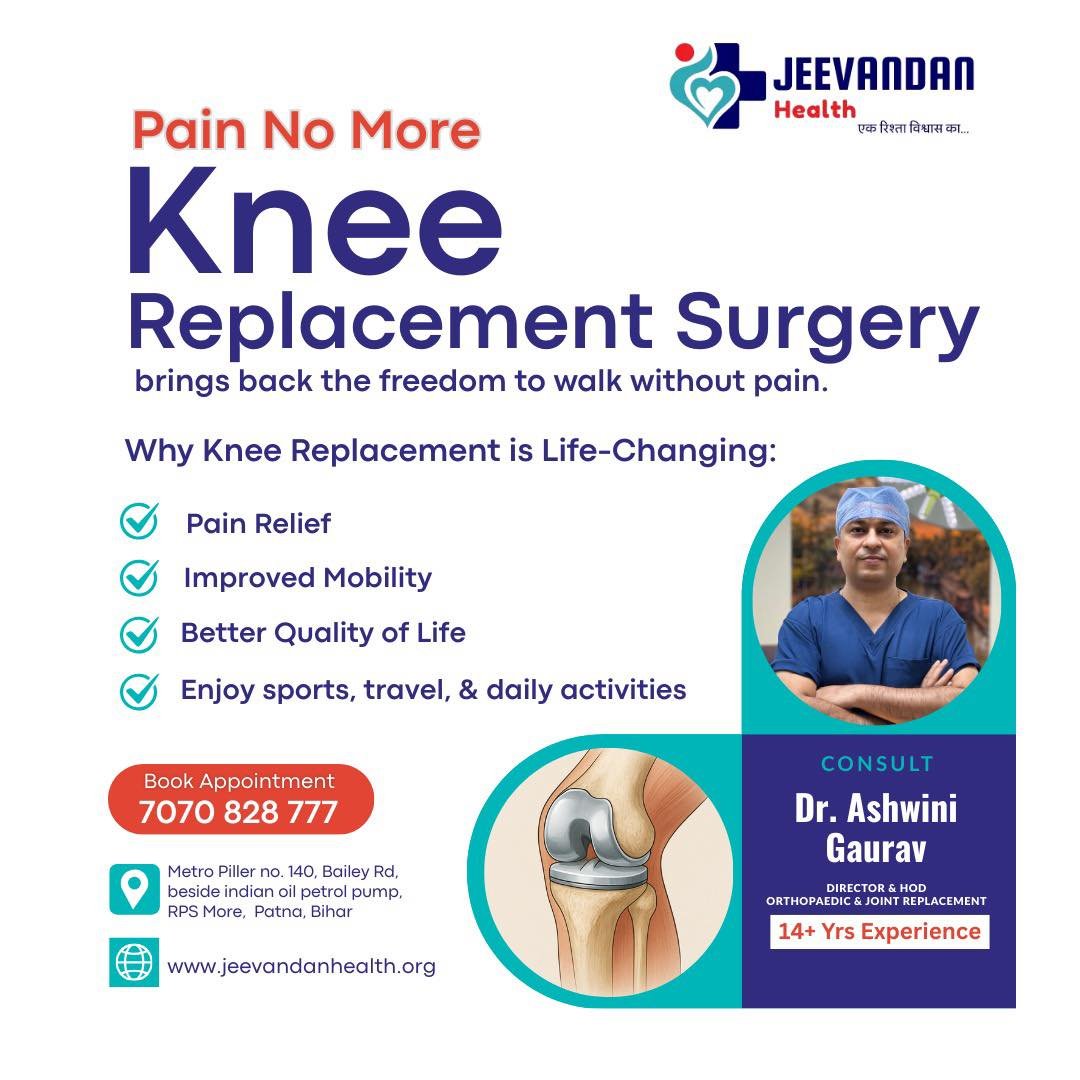Joint replacement: what it is, why it’s needed & how it’s treated. Expert care at Jeevandan Health Patna. Book consultation today: +91-7070828777

What is Joint Replacement Surgery?
Joint replacement surgery, or arthroplasty, involves removing damaged joint components and replacing them with artificial implants made of metal, plastic, or ceramic.
The most common joints replaced are the hip and knee, but shoulder, elbow, ankle, and wrist replacements are also performed. This procedure aims to alleviate pain, restore mobility, and improve quality of life for individuals with severe joint damage.
Why Joint Replacement is Performed
Leading Causes
- Osteoarthritis: The most common reason, affecting over 32 million U.S. adults. It causes cartilage degeneration, leading to pain and reduced joint function.
- Rheumatoid Arthritis: An autoimmune condition that inflames joints, causing damage and deformity.
- Trauma or Injury: Severe fractures or accidents can necessitate joint replacement.
- Bone Tumors or Congenital Deformities: Rare conditions that damage joints.
Indications for Surgery
- Chronic pain unresponsive to non-surgical treatments (e.g., medications, physical therapy, weight loss).
- Significant functional decline (e.g., difficulty walking, climbing stairs)
- Pain during rest or sleep, disrupting daily activities
How Joint Replacement is Treated
Surgical Procedure
- Partial vs. Total Replacement:
- Partial: Replaces only damaged sections (e.g., part of the knee or hip).
- Total: Replaces the entire joint (e.g., full hip or knee).
- Modern Techniques: Minimally invasive approaches and robotic-assisted surgery reduce tissue damage and improve precision.
Post-Surgery Treatment and Recovery
- Pain Management:
- Medications (e.g., NSAIDs, narcotics) and non-pharmacological methods (e.g., cold therapy, meditation).
- Complication Prevention:
- Blood clot prevention via walking and anticoagulants.
- Infection control through hygiene and antibiotic use.
- Rehabilitation:
- Early Exercises: Quadriceps sets, ankle pumps, and straight leg raises to prevent stiffness.
- Physical Therapy: Strength training, balance drills, and gait training to restore mobility.
- Aquatic Therapy: Low-impact exercises in water to reduce joint stress.
Recovery Timeline
| Activity | Timeframe |
| Walking with aids | 1–2 days post-surgery |
| Full weight-bearing | 2–6 weeks |
| Resuming driving | 4–6 weeks |
| Returning to work | 4–12 weeks (varies by job type) |
| Full recovery | 6–12 months |
Long-Term Care
- Regular follow-ups to monitor implant function.
- Avoiding high-impact activities (e.g., running, contact sports) to prolong implant lifespan.
Key Statistics
- Over 1 million joint replacements are performed annually in the U.S., with knee replacements being the most common.
- Advanced materials (e.g., high-density polyethylene, titanium) ensure implants last 20+ years.
Conclusion
Joint replacement surgery is a transformative solution for severe joint damage, offering pain relief and restored mobility. A multidisciplinary approach, combining advanced surgical techniques and personalized rehabilitation, ensures optimal outcomes.
Frequently Asked Questions (FAQs)
Q1: How long does a joint replacement last?
Most artificial joints last 15-20 years or more, depending on activity levels and implant type.
Q2: Is joint replacement surgery painful?
Post-surgery pain is managed with medications; most patients experience significant pain relief once healed.
Q3: What are the risks of joint replacement?
Risks include infection, blood clots, implant loosening, and joint stiffness, but these are minimized with advances in surgical techniques.
Q4: How soon can I walk after joint replacement?
Many patients begin walking with assistance within 1-2 days and progressively increase activity during recovery.
Q5: Can joint replacement improve quality of life?
Yes, it significantly reduces pain and restores mobility, allowing resumption of daily activities.


